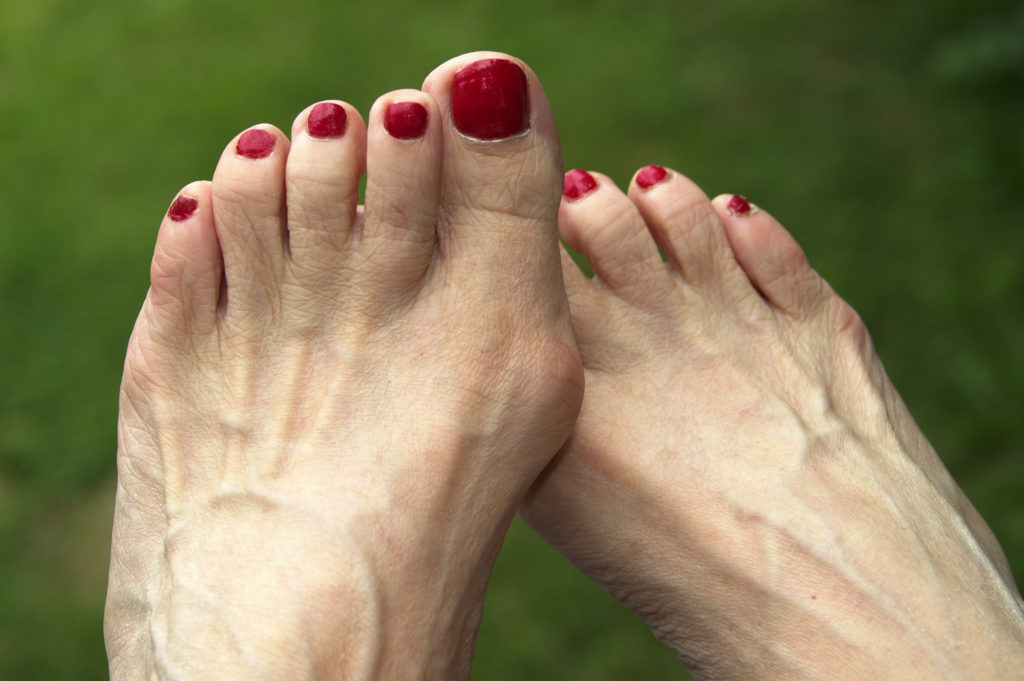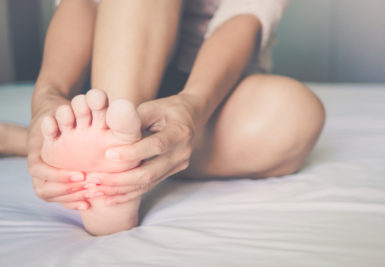THIS POST IS PART OF THE ULTIMATE GUIDE TO FOOT AND ANKLE INJURIES
Hallux valgus, more commonly referred to as a bunion, is a painful bony bump that develops slowly on the inside of the boot at the big toe joint. Pressure on the big toe joint makes the big toe lean toward the second toe. Over time, the normal structure of the foot changes, resulting in hallux valgus. This makes it painful to wear shoes or walk.
Anatomy
The big toe is made up of two joints; the larger of the two is the metatarsophalangeal (MTP) joint, which is where the first long bone of the foot meets the first bone of the toe. This is where hallux valgus develops.
A bunion forms when the bones that make up the MTP joint move out of alignment. The MTP joint gets larger and protrudes from the inside of the forefoot.
Why do people get bunions?
They may be caused by wearing poorly fitted shoes, such as heels with a pointed toe, heredity or having an inflammatory condition, such as rheumatoid arthritis. Anyone can develop these bony bumps, but they are more common in women since many women wear tight, narrow shoes that squeeze the toes together.
Symptoms
- A visible bump on the inside of the foot
- Pain and tenderness
- Redness and inflammation
- Hardened skin on the bottom of the foot
- A callus or corn on the bump
- Stiffness and restricted motion in the big toe, which can lead to difficulty walking
Physician examination
Your physician will ask you for a complete medical history, your symptoms and conduct a physical examination. An X-ray can confirm the diagnosis.
Make an appointment with a foot and ankle specialist at OrthoIndy
How do you get rid of bunions on your feet?
Usually, treatment does not involve surgery, which can help reduce pain and keep it from worsening; however, it will not reverse the development. Most of the time your physician will recommend a change in footwear, to add padding to your shoes, orthotics, icing or medications.
Bunion surgery is only recommended if other nonsurgical options have not provided relief. Surgery realigns the bone, ligaments, tendons, and nerves so that the big toe can be brought back to its correct position. No hospital stay is recommended after surgery. There are many different surgical methods, the best method of surgery is determined after an examination.
Recovery
It may require up to four weeks of non-weight bearing and can take several months after surgery for a complete recovery.
Learn more about foot and ankle treatment at OrthoIndy
Schedule an appointment
Schedule an appointment Your well-being is important to us. Click the button below or call us to schedule an appointment with one of our orthopedic specialists. If your injury or condition is recent, you can walk right into one of our OrthoIndy Urgent Care locations for immediate care. For rehabilitation and physical therapy, no referral is needed to see one of our physical therapists.





